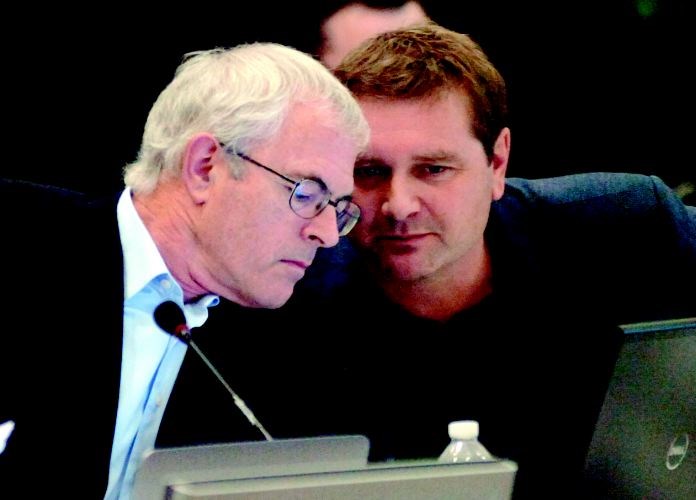The provincial government was able to get actual answers to questions Wednesday at the Northern Gateway pipeline hearings, but not the answers its was looking for.
Christopher Jones, a lawyer for the province, spent nearly 90 minutes trying to get witnesses from Enbridge to talk about the efficacy of leak detection systems on the proposed Alberta-to-Kitimat pipeline at the National Energy Board's Joint Review Panel hearings. He debated with company experts about the remoteness of the proposed route, how well automated systems work and the effect snow cover will have on aerial and ground visual inspections.
Enbridge director of pipeline control systems and leak detection Barry Callele did most of the answering on behalf of Northern Gateway. He said some of the statistics on automated leak detection systems Jones cited weren't reliable because data collected before 2010 in the United States was "quite sketchy."
Under questioning from Jones, Callele admitted that some of the promises the company has made in its filing - specifically its ability to remotely detect small spills - can't be verified until further tests are done. However he said the company is confident it will be able to prove it can meet its promises.
"We do hope it's not an issue of 'trust us and wait for construction,'" he said.
On Tuesday, the first day of hearings, provincial lawyer Elisbeth Graff spent much of her time bogged down in a debate with the witness panel about who best to address her questions.
The entire process appears to be frustrating Environment Minister Terry Lake, who issued a news release Wednesday evening accusing Enbridge of not being forthright enough.
"One thing that is crystal clear after the last two days is that Enbridge/Northern Gateway is putting off making commitments about including these systems in the pipeline design until after they get
approval to proceed," Lake said. "We believe that the only way to protect British Columbia's interests is to ensure that these commitments are made up front, so that everyone will understand how they intend to run this project."
The spectre of the catastrophic bitumen spill in Michigan loomed large during Jones's questioning. He pointed to U.S. statistics showing just five per cent of spills are detected by computerized monitoring and only 20 per cent of major spills are picked up by the automated systems.
For spills in Enbridge-operated pipelines, Jones said only three of 31 spills over the past decade in the United States have been successfully detected by automated systems and none of the six largest spills - including the infamous 2010 Enbridge spill near Marshall, Mich.
Callele said the company's highly touted leak detection systems did sound alarms within minutes of that spill occurring, but blamed human error for not responding to those alarms for hours.
According to figures calculated by Enbridge, Callele said the computerized systems should be able to detect 15.7 per cent of all spills and nearly a third of major spills. He also said the computerized systems are designed to be part of a series of overlapping detection systems including aerial and ground visual surveillance, notification from the public and pipeline supervisors monitoring the conditions.
Jones contended that due to the remoteness of the pipeline and its northern location, it will be less likely that the general public will see a leak and report it to the company and that aerial and ground surveillance will be less useful when the pipeline is covered in snow in the winter.
"It's true that it goes through a remote terrain, but it's not the only remote terrain Enbridge goes through," Callele replied, pointing to rural areas on the prairies.
In the case of one of the computerized systems showing something wrong along the Northern Gateway network, Callele said the company's 10-minute rule will be respected. Employees monitoring the system will have 10 minutes to determine if abnormalities found are a result of a spill or something less threatening like equipment malfunctioning. If the cause of the alarm can't be determined within 10 minutes, Enbridge has instructed its staff to shut the pipeline down pending further inspection. It could take up to three more minutes for valves to be physically closed.
Northern Gateway also promised to continue to seek out the newest advances in leak detection systems and said cost will not be an issue in installing them.
The hearings were disrupted briefly when a women in the public gallery objected to an answer from Northern Gateway and subsequently tried to address the panel. She was asked to leave and eventually complied.
Only registered interveners are able to ask questions of witness panels, however some individuals and community groups have registered.
The hearings continue Thursday with C.J. Peter Associates Engineering, Driftpile Cree Nation and a coalition of environmental groups expected to take up much of the day. The province will get another crack at Enbridge when the second witness panel sits, likely sometime next week.



